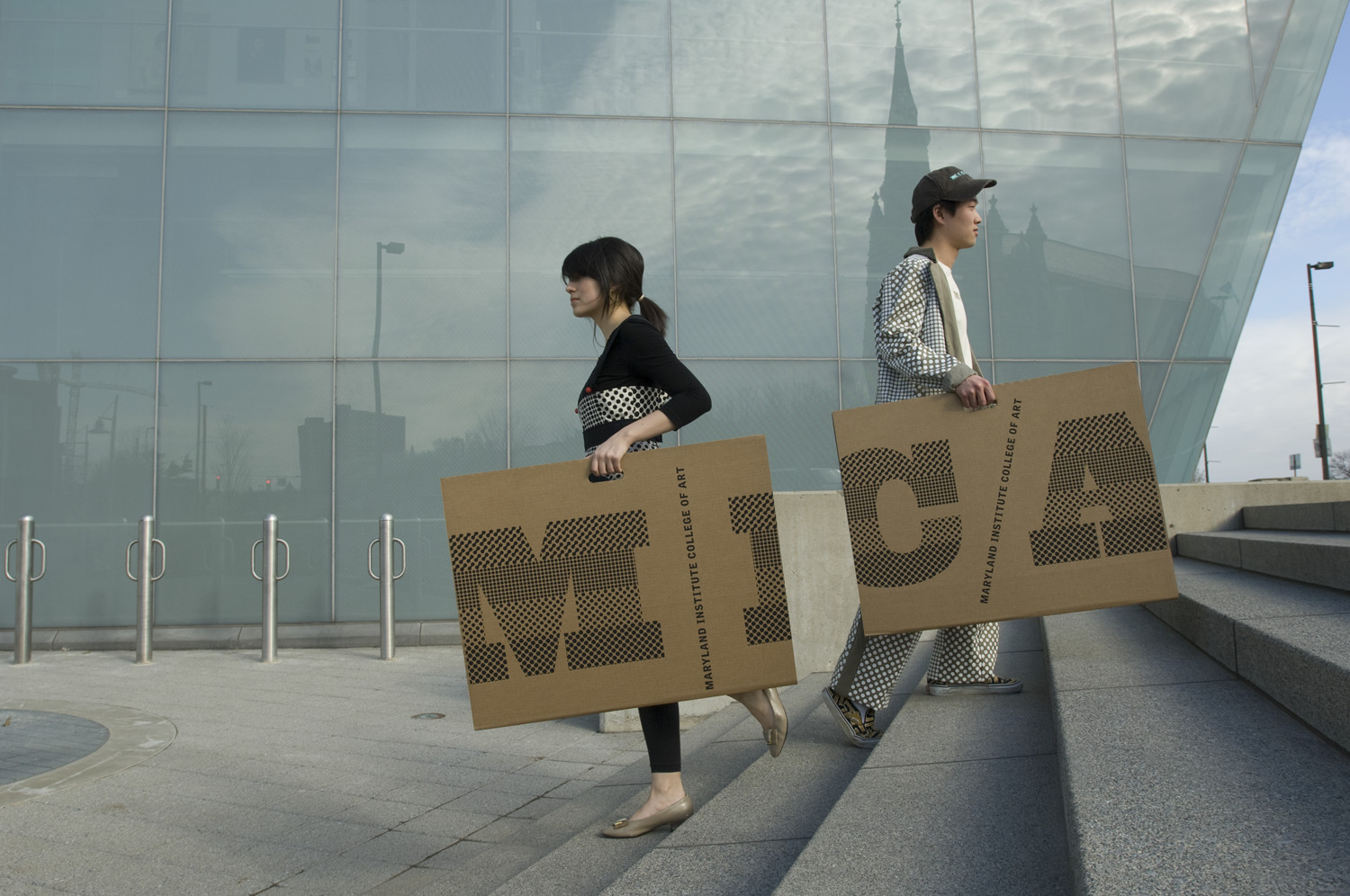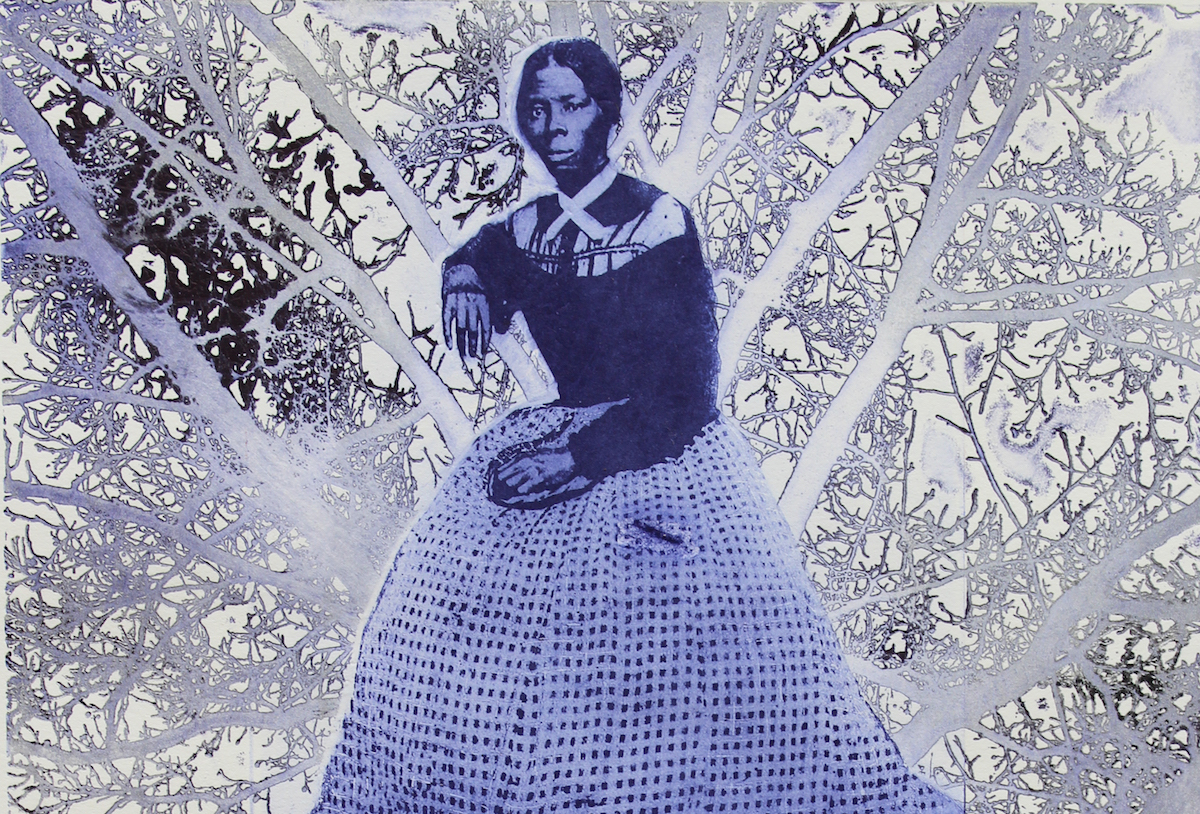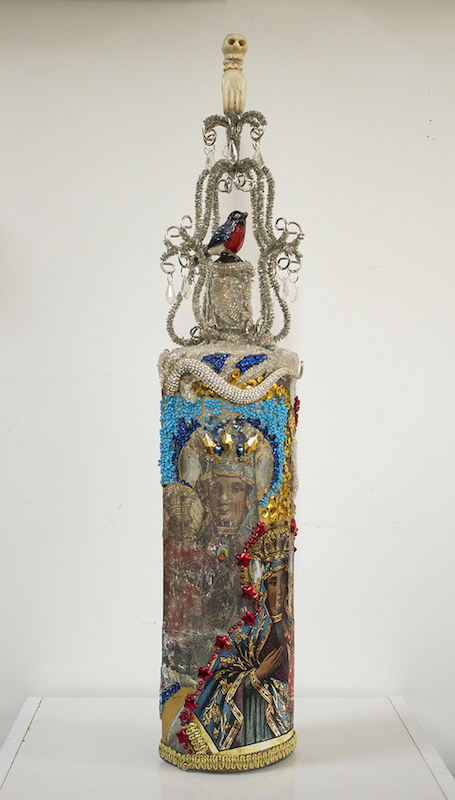Oletha DeVane’s The Other Side of Darkness at Project 1628 by Angela N. Carroll
Oletha DeVane’s latest exhibition, “The Other Side of Darkness” at Project 1628, is nothing short of magical. The collection showcases assemblage, solar etchings, sculpture, and mixed media works about emancipation, spirituality and omens that haunt and inform new mythologies about iconic American figures.
I was unfamiliar with DeVane’s work before I saw the announcement for her opening. It is difficult to appreciate the subtle skill and beautiful detail of the collection from photographs, bit when you witness the work in person, you will quickly realize the immense talent and unique perspective DeVane contributes to contemporary art.

Birds, snakes, sweet gum ball trees (Liquidambar styraciflua), and young images of Harriet Tubman recur throughout the collection as haunting, invasive, and at times, humbling apparitions. The elemental and spiritual iconography DeVane incorporates reference and compound American history, myths and spiritual belief systems from native and global communities; Thai spirit houses, Haitian voodoo, West African and American elemental spiritual systems and Catholicism. Though DeVane does not practice any of these religions (she is Bahai) she does believe in a compelling universal curiosity.
“I certainly think that the concept behind all religion is finding some way of acknowledging a greater spirit,” she said. “I found it very interesting to go through the whole notion of what god is. We don’t have a real idea. For every culture there is a thing about trying to figure it out.”
What I find most exciting about the exhibition are the intersections DeVane draws between African Diasporic, Native American and Asiatic myths, American history, and the present. In “Harriet,” a small understated solar etching, a portrait of a young Harriet Tubman sits sternly between the expansive branches of two large sweet gum ball trees. The limbs of the leafless branches frame her figure and create a skeletal structure likened to the wings of a bird or an angel. Young Tubman’s gaze is confrontational, confident, and unapologetic; a bold act of defiance.

Countless African Americans from slavery to the contemporary moment have been lynched, beaten, raped, murdered, dismembered, mauled, imprisoned, or violated in unbelievably inhumane ways for staring a white person or person presumed to hold some position of power or authority directly in the eyes. It is fitting then that DeVane should feature this rarely published depiction of Tubman, not as an old woman, but as a young warrior, an alert archangel perched and ready for battle. Harriet Tubman is often called the “Moses of her people,” a reference to the biblical figure who, like Tubman, led hundreds of slaves out of bondage. When one considers the ominous obstacles, extraordinary dangers, and vehement consequences enslaved Africans experienced attempting to achieve freedom, the feats Harriet Tubman accomplished are indeed supernatural, saintly, and miraculous.
DeVane invokes a clever interplay between historical icons and spiritual totems. Even when portraits of Tubman, an iconic abolitionist, are not featured, (her likeness only appears in two pieces, “Harriet” and “Minty,” another small solar etching), the resonance of her ambitious will to be free and free others, is articulated in other iterations throughout the collection.

The iconic image of Tubman is a passive symbol for the physical, spiritual, and psychological liberation of black people. DeVane activates Tubman’s image beyond its physicality and expresses this impact through totems; black birds, black spirit houses with black apples and black butterflies, black Madonnas, or an unnamed towering black saint.
The images that found “Other Side of Darkness” create a universe of sacred associations where dark things matter, the color black, black people, and black culture are all revered and elevated to sacred positions.
DeVane’s works are revisionist histories that celebrate and activate the power and influence of colonially marginalized people; in her creations so called savages and pagan ritualists, are holy, her subjects are whole and fully realized humans, systems, and/or sciences.
In “Saint For My City,” a work DeVane has referenced as “a prayer for Baltimore”, a large onyx Saint stands with arms outstretched atop an obelisk. The head of the Saint is haloed by a rhizome of atom-like orbs. The hands of the Saint drip a ringlet of blood red spheres down the cape that arcs around its body like wings on the birds that appear throughout the exhibition. The obelisk bears many names for god, created with beads and shiny sequins, that predate Abrahamic religions; Osun, Ogun, Isis, Horus, Osiris, Ra,Thor, among others. A large crimson red mosaic snake slivers from the base of the obelisk to its apex where the Saint stands. The Saint and obelisk tower above the other works in the collection. Standing in front of the work I felt dwarfed, humbled, a tiny being pondering the immense implications of black saints who peer knowingly down at us all from a tower of gods.
Some of the most beautiful prints in the collection are rendered from a solar etching process, in which light sensitive plates imprint fragments of the surrounding environment onto their surface. DeVane pushes this technique further by overlaying multiple screens on top of one another to create delicate and ethereal prints that have the textural quality of water color paintings, and the allusive nature of dreams or memories. In “Ghost Raven,” two sweet gum trees sprout from the top and bottom of the print. The branches of the trees overlap at the center in a dense cluster of limbs. Hovering phantom black birds abound. In “Jacobs Ladder”, another biblical reference, a colossal ladder stands in the center of an unknown place and stretches up beyond the ethereal green land into an infinite blue and purple tinged sky.
The images DeVane captures within the solar etchings never rest comfortably in the natural world we know and have come to understand as tangible, rather the etchings while incorporating elemental objects we can read as birds or trees, juxtapose those objects in odd and unsettling ways that make it difficult to confirm a definitive place or time in which the objects exist. The worlds captured by the solar etchings trigger stirring relationships between the natural environment and spiritual planes, what I call the in-between worlds; the mythologized spaces that reside within and outside our own, the energetic fields that rest within and just outside our corporeal forms and environments.

As an exhibition, The Other Side of Darkness invigorates and affirms myths as powerful catalysts for liberation and the radical imagination. Like Stephen Towns’ revisionist and humane portraits in Take Me Away to the Stars at Galerie Myrtis, DeVane’s creations render hybrid mythologies that expand rather than truncate profound historical narratives and spiritual cosmologies, what Jung considers “the archetypes of the collective unconscious.”
By establishing new conversations around ancient signifiers and critical historical figures, DeVane gives new voice to those histories, traditions, and spiritual systems that are quickly being erased by modernity, fear, or conservative educational systems (especially in an age where Texas public schools refer to Africans brought against their will to America during the Trans-Atlantic Slave Trade as “workers” ). DeVane’s The Other Side of Darkness reminds us that we are all the sum of the myths we venerate, the myths that are canonized as histories, the spiritual beliefs that are recognized as religions, and all the other possibilities that exist beyond categorization.
************
Author Angela N. Carroll uses illustration, citizen journalism, documentary film, words, and experimental animation as primary mediums to contribute to and critique the archive. Music and meditation are her medicine. She is an artist-archivist; a purveyor and investigator of culture. Follow her on IG @angela_n_carroll or at angelancarroll.com.
Oletha DeVane: The Other Side of Darkness is up at Project 1628 from April 9, 2017 – May 21, 2017 (with a closing reception 2:00 pm to 5:00 pm)








